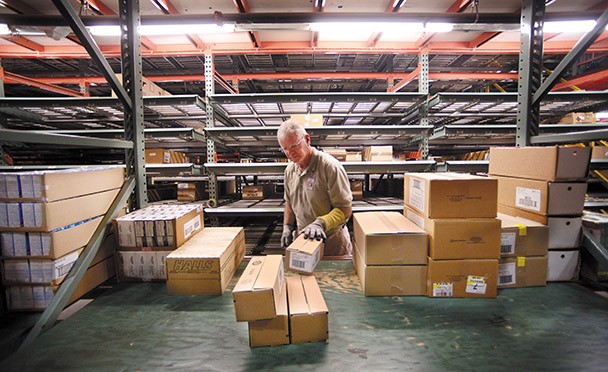Wal-Mart updates suppliers on new OTIF requirements
by January 30, 2018 5:34 pm 3,987 views

An estimated 4,000 Wal-Mart suppliers are in Bentonville this week at the retailer’s annual Supplier Growth Forum with the hot topic being the new guidelines for On-Time-In-Full (OTIF) deliveries of goods sent to the retailer from suppliers.
Suppliers, in town for Tuesday and Wednesday meetings, were told the new threshold for OTIF deliveries for full truckload shipments is moving from 75% to 85% by April. Less-than-truckload shipments will have a 50% threshold for compliance, up from a 33% baseline set a year ago. The must-arrive-by-date (MABD) window for delivery has moved from to one or two days from four.
The new requirements shouldn’t come as a surprise to anyone given Wal-Mart announced the mandate in February 2016 and then set the guidelines in February 2017 with the fines going into effect in August. That gave suppliers 18 months to make preparations for the higher demands.
“I imagine the LTL providers and consolidators would prefer that retailers didn’t need to have such high requirements, but all retailers need on-time service in the new retailer environment. They all have stringent requirements. I can’t speak for our competitors, but I know we have already spent millions of dollars and 18 months on this issue,” said CaseStack CEO Dan Sanker.
He said CaseStack has invested in new yard management systems, compliance logisticians, blockchain projects with ShipChain and SupplyPike to improve documentation tracking, analytics software, and a truckload control tower that manages everything down to algorithmic weather-related routing to be able to provide guaranteed services for customers who are suppliers to Wal-Mart and other retailers.
Colby Beland, vice president of sales and marketing at Fayetteville-based CaseStack, said he was not surprised with the new guidelines. Wal-Mart said in November there was some progress made toward the goal of 95%, but it was going to take longer than previously expected to reach that threshold. The full truckload guidelines were supposed to move to 95% this year, but the retailer has backed that down to 85%, Beland said.
Ed Oldham, vice president of flow at Walmart U.S., said in November the retailer had seen the average vendor score improve about 2 times over where it was 18 months prior. He admitted then the 95% goal with a one-day delivery window was ambitious but said without a goal the progress made to date likely wouldn’t have happened. Oldham said the fees for non-compliance were also instituted to help motivate suppliers to follow the new guidelines.
Oldham said the 95% goal is still in play, but the retailer understands getting there is a journey and will take longer than originally anticipated. The less-than-truckload (LTL) shippers have the hardest time meeting the guidelines and the retailer said that’s why the threshold is lower.
Beland said LTL shippers are carrying the freight of multiple suppliers that could have different arrival deadlines. He said LTL companies don’t set the appointment for delivery until the truck is full. He said trying to get a delivery appointment one day out is virtually impossible at some distribution centers.
“While the guidelines may just be 50% for LTL shippers, I can tell you that buyers and replenishment managers are looking for the 95% because that is the final goal and that helps the overall scorecard. We’ve had some clients tell us the buyer team recommended the supplier make a change in transportation, including transferring away from using Walmart’s own system, to try and get closer to the goal,” Beland said.
Oldham admitted in November that suppliers relying on Wal-Mart’s system had some of the lowest overall scores. He said Wal-Mart would do better and the suppliers would have to improve their efforts.
Several freight consolidators including CaseStack, RJW and Prime Logistics offer suppliers of all sizes a guaranteed service, in addition to a regular service. The firms act as underwriters calculating the risks associated with guaranteed on-time delivery. The companies cover the penalties if the delivery falls short of the guarantee.
The biggest risk to on-time delivery is getting a truck given the shortage of equipment in the transportation sector. But firms leveraging their carrier relationships are able to offer a guaranteed service that costs anywhere from 14% to 19% more than the regular service, which is still less than a typical LTL rate.
Beland said the new mandates are not out of reach even with the tight trucking capacity, but they do come at a higher cost to suppliers simply because all modes of transportation costs are rising. He said suppliers can’t ignore the mandate because it matters to Wal-Mart, who has actually lagged other retailers in instituting fines and setting higher expectations around received goods from suppliers.
